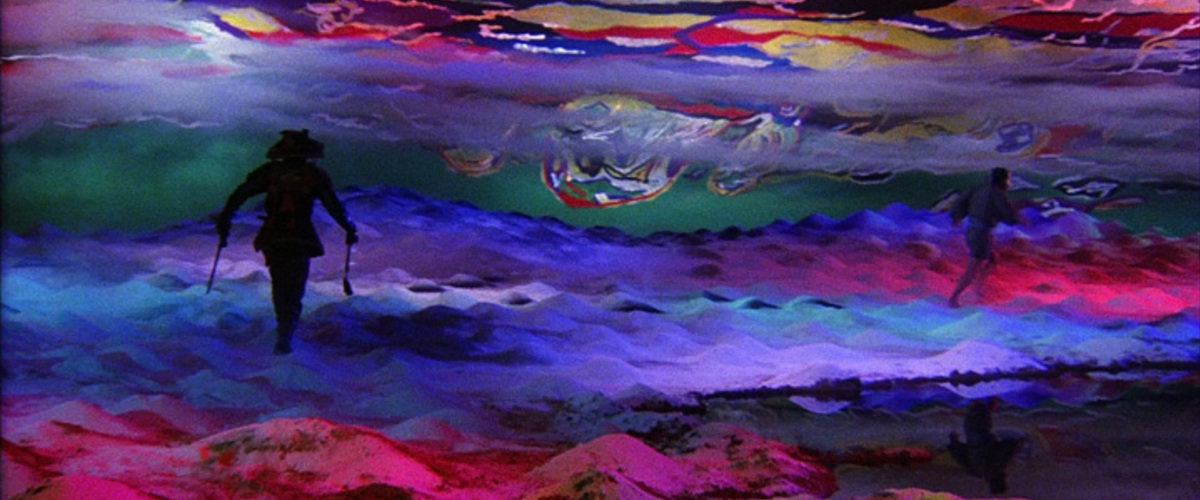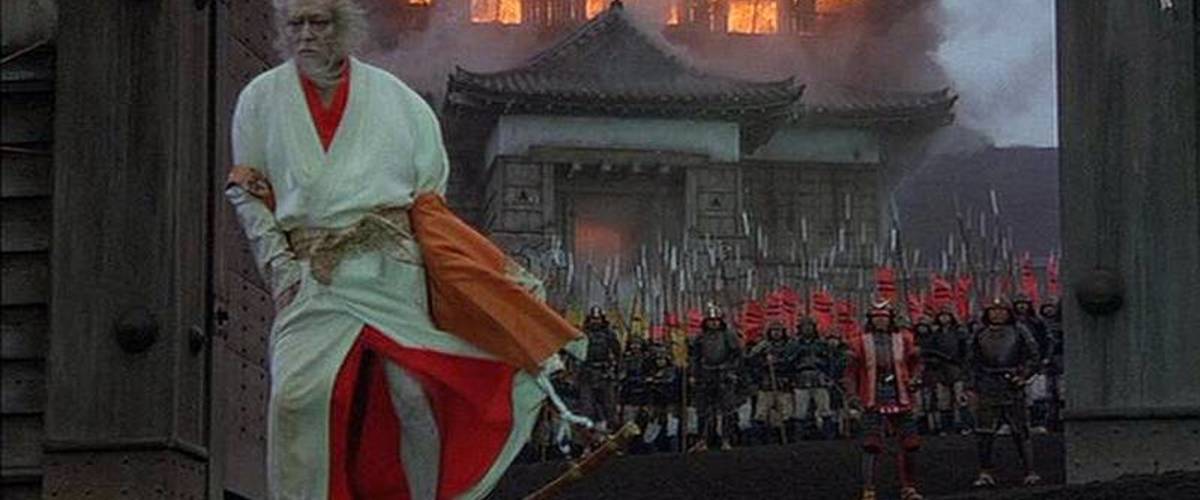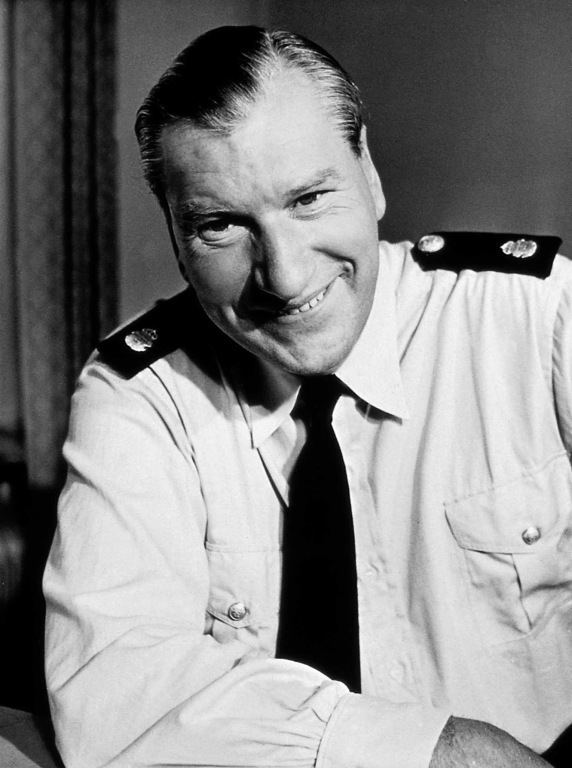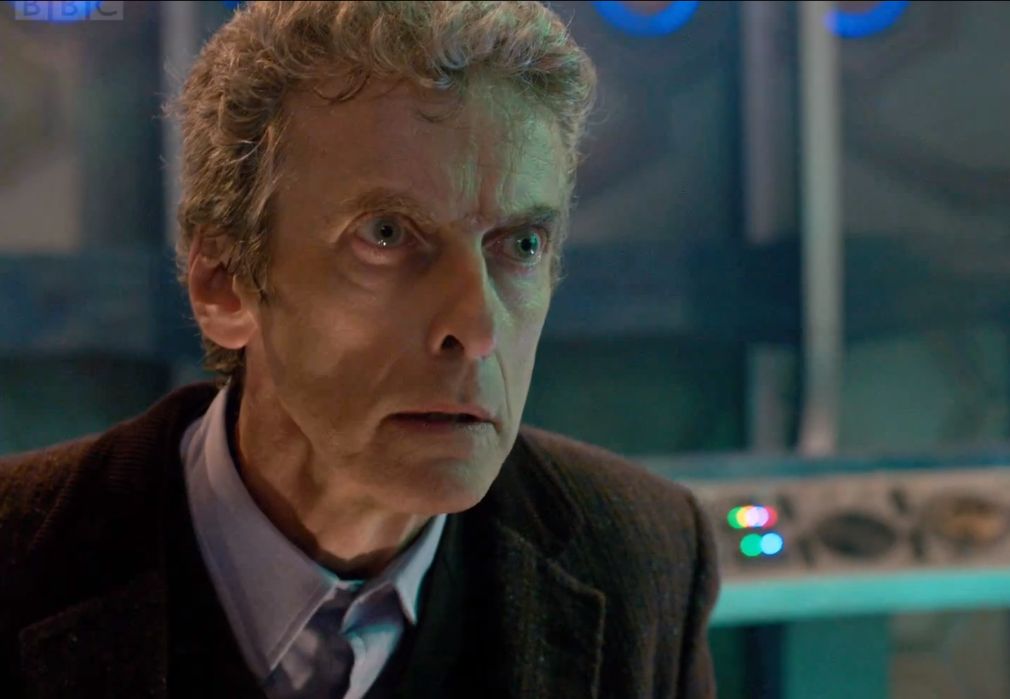|
|
Post by teleadm on Mar 23, 2020 9:00:35 GMT
One of the giants of cinema who was born 110 years ago this year. In these trying times when we have to isolate and distance ourselves from others, and we might run out of ideas to watch, there is a chance to catch up with movies we have meant to watch or re-watch but never get's around actually doing it.  Akira Kurosawa (1910–1998) Akira Kurosawa (1910–1998)
Here's a reminder of some of his movies:  Drunken Angel Drunken Angel 1948. A drunken doctor with a hot temper and a violence-prone gangster with tuberculosis form a quicksilver bond.   Stray Dog Stray Dog 1949. During a sweltering summer, a rookie homicide detective tries to track down his stolen Colt pistol. The film is considered a precursor to the contemporary police procedural and buddy cop film genres.  Rashomon Rashomon 1950. Although the film borrows the title from Ryūnosuke Akutagawa's short story "Rashōmon", it is based on Akutagawa's short story of 1922 "In a Grove" (itself based on Ambrose Bierce's story "The Moonlit Road"), which provides the characters and plot. The story takes place in the 8th century at Rashomon, the South gate to Heian Kyo (modern Kyoto). The film is known for a plot device that involves various characters providing subjective, alternative, self-serving, and contradictory versions of the same incident.  Ikiru (To Live) Ikiru (To Live) 1952. The film examines the struggles of a terminally ill Tokyo bureaucrat and his final quest for meaning. The major themes of the film include learning how to live, the inefficiency of bureaucracy, and decaying family life in Japan.  Seven Samurai Seven Samurai 1954, the nearly 3,5 hours samurai epic. The story takes place in 1586 during the Sengoku period of Japanese history. It follows the story of a village of farmers that hire seven rōnin (masterless samurai) to combat bandits who will return after the harvest to steal their crops.  Throne of Blood Throne of Blood 1957. The film transposes the plot of William Shakespeare's play "Macbeth" from Medieval Scotland to feudal Japan, with stylistic elements drawn from Noh drama. The film stars Toshiro Mifune and Isuzu Yamada in the lead roles, modelled on the characters Macbeth and Lady Macbeth.  The Hidden Fortress The Hidden Fortress 1958. It narrates the story of two peasants who agree to escort a man and a woman across enemy lines in return for gold without knowing that he is a general and the woman is a princess.  The Bad Sleeps Well The Bad Sleeps Well 1960. The film stars Toshiro Mifune as a young man who gets a prominent position in a corrupt postwar Japanese company in order to expose the men responsible for his father's death. It has its roots in Shakespeare's "Hamlet", while also doubling as a critique of corporate corruption.   Yojimbo Yojimbo 1961. It tells the story of a rōnin, portrayed by Toshiro Mifune, who arrives in a small town where competing crime lords vie for supremacy. The two bosses each try to hire the newcomer as a bodyguard.  High and Low High and Low 1963. An executive of a shoe company becomes a victim of extortion when his chauffeur's son is kidnapped and held for ransom. Based on a novel by Ed McBain.  Red Beard Red Beard 1965. In 19th-century Japan, a rough-tempered yet charitable town doctor trains a young intern. The film looks at the problem of social injustice and explores two of Kurosawa's favourite topics: humanism and existentialism.  Dodes'ka-den Dodes'ka-den 1970. Various tales in the lives of Tokyo slum dwellers, including a mentally deficient young man obsessed with driving his own commuter trolley (sounding like Dodes'ka-den, hence this movie's title).  Dersu Uzala Dersu Uzala 1975. The film is based on the 1923 memoir "Dersu Uzala" (which took its name from the native trapper) by Russian explorer Vladimir Arsenyev, about his exploration of the Sikhote-Alin region of the Russian Far East over the course of multiple expeditions in the early 20th century.  Kagemusha Kagemusha 1980. It is set in the Sengoku period of Japanese history and tells the story of a lower-class criminal who is taught to impersonate a dying daimyō to dissuade opposing lords from attacking the newly vulnerable clan. The daimyō is based on Takeda Shingen, and the film ends with the climactic 1575 Battle of Nagashino.  Ran Ran 1985. The plot derives from William Shakespeare's "King Lear" and includes segments based on legends of the daimyō Mōri Motonari.  Thanks for watching! Feel free to discuss! |
|
|
|
Post by mikef6 on Mar 23, 2020 14:23:46 GMT
Great thread. My head is full of replies but I am going to have to take some time sorting out these thoughts. But first, here are a few sentences on one of the films.
The Hidden Fortress. First seen in a theater setting. This combination of comedy, drama, and historical spectacle is an exciting adventure in movie going. As part of the promotion, the theater stated in its ads that Fortress has been a big influence on Star Wars - which I think comes from a statement from George Lucas himself. I found this a bit of a distraction, because I kept looking for parallels. It is a story about the rescue of a princess, but only this very broad plot hook applies. Also, there are a couple of bickering peasants who may be R2D2 and CP3O, but the matters they fuss over have no relation to Lucas’s story. Hope and Crosby trading quips on the desert in Road To Morocco remind me more of the Star Wars ‘bots than anything in Kurosawa’s epic. There is, of course, much more to be said about this film.
|
|
|
|
Post by nutsberryfarm 🏜 on Mar 23, 2020 14:45:40 GMT
|
|
|
|
Post by london777 on Mar 24, 2020 17:49:40 GMT
Easily the best known Japanese director in the West, but I have read somewhere that he is not as greatly esteemed in his own country. If that is true (and it may well not be true), what would be the reasons? I would guess that he is considered to have deferred too much to Western tastes and expectations?
Satyajit Ray is similarly the best-known (only well-known?) Indian director in the west, but again (and in this case I can write with more confidence) is not widely revered in India. But that is easily explained because he filmed in Bengali which is only understood by a minority of Indians, and because of the regional and religious differences which obtain. As far as I know, the Japanese are homogeneous culturally and linguistically.
I would be interested in the views of those who know more about these matters.
|
|
|
|
Post by fangirl1975 on Mar 24, 2020 18:33:38 GMT
I recently saw Rashomon via library check out. It was the first time I ever saw a Kurosawa film.
|
|
|
|
Post by wmcclain on Mar 24, 2020 19:30:57 GMT
Easily the best known Japanese director in the West, but I have read somewhere that he is not as greatly esteemed in his own country. If that is true (and it may well not be true), what would be the reasons? I would guess that he is considered to have deferred too much to Western tastes and expectations? Satyajit Ray is similarly the best-known (only well-known?) Indian director in the west, but again (and in this case I can write with more confidence) is not widely revered in India. But that is easily explained because he filmed in Bengali which is only understood by a minority of Indians, and because of the regional and religious differences which obtain. As far as I know, the Japanese are homogeneous culturally and linguistically. I would be interested in the views of those who know more about these matters. What I recall (and I am not an authority): he was such a dominant presence in Japanese cinema that the next generation of directors just wanted to get out from under his shadow. So they had to do other things and his work became considered old-fashioned. The sad part is that he wanted to mentor the younger people but they didn't need him by then. A critic on the Sanjuro disk commentary track said this is the story behind the story of that film: Sanjuro (1962), directed by Akira Kurosawa. While their elders are away at court, nine young samurai discover a plot to take over the district. Full of naive warrior spirit, they are eager to do battle with the conspirators. Luckily, crafty, scruffy ronin Sanjuro is on hand to help and keep them out of serious trouble. This sequel to Yojimbo (1961) is lighter in tone, more of a boy's adventure. The humor is less bitter. Sanjuro has also become more philosophical: although he can still take on a small army, he would rather avoid fighting if he can. "The best sword is kept in its sheath". Still, we have even more fights with lightning-fast swordplay. Kurosawa was the first to use "flesh" sound effects, and we hear the moans and whimpers of the vanquished. To that point, true to the genre, it had been bloodless. In a shocking final scene, the duel results in vast blood spray, fountains of chocolate syrup foaming and pooling on the ground. It's his way of saying: this has been fun, but I'm not laughing. For funny bits: keeping the kids from killing themselves is a full time job. We have a friendly enemy prisoner living in the closet who pops out with advice from time to time. Criterion Blu-ray. Good image and valuable commentary track. He says that the relation of Sanjuro to the young men is the sort of mentoring Kurosawa wanted to do for younger film directors. They weren't having it though: he was such a dominating character that they wanted to break out and do new things. As always, Kurosawa makes action/adventure pictures where conscience and compassion are more important than adherence to a warrior code. 
|
|
|
|
Post by mikef6 on Mar 24, 2020 20:11:57 GMT
A couple of lesser known from Kurosawa. Shizukanaru Ketto (The Quiet Duel) (1949). This film came in between “Drunken Angel” and “Stray Dog” but became available on DVD early in the century. I don’t know if it is still available. It was based on a play rather than a script Kurosawa developed himself so, it has been said, he lost interest in the picture before it was finished and it turned out to be a little more perfunctory than you would expect from the great director. But wait! Things aren’t a bad as the reputation suggests. There is much to praise and enjoy. The opening scene is a tent hospital on a WWII battlefield is a great grabber. The surgeon (Tashiro Mifune) operates on a wounded soldier. Unknown to him, the soldier has syphilis which infects the doctor through a cut on his hand. Back in civilian life, Mifune, now in practice with his father (the great Takashi Shimura – I would watch any movie with him in it) is trying to keep his disease secret because of the social stigma. He has to steal medicine from his own clinic and try to discourage his fiancé who has waited for him throughout the war years. As written, the young doctor is just too noble to be believed, but Mifune’s sensitive performance gives him the needed human dimension. There is also a very fine performance by Noriko Sengoku as a surly unwed mother and former prostitute who has been given employment in the clinic. After finding out the doctor’s secret, she goes from scorn at his supposed hypocrisy to growing admiration as she learns the truth and gets the desire to improve her own life. It is actually the two women in the cast (also Miki Sanjo as the long suffering fiancé) who grow the most through the course of the story. Kurosawa’s failure to “open up” the play very much may be an indication of his lack of interest. But the drama and the acting redeem whatever faults lie in the original source.  Shûbun (Scandal) / Akira Kurosawa (1950 Shûbun (Scandal) / Akira Kurosawa (1950). Kurosawa biographer Stuart Galbraith points out that some people were concerned in post-war Japan about the Westernization of their culture. The growth of the tabloid news media (skewered in this film) was one of the concerns. What a lot of film lovers did NOT object to was the flood of American and European movies that were available after decades of strict censorship. Indeed, “Scandal” looks like a mash-up of Capra underdog social drama, any number of courtroom thrillers, and Kurosawa’s own “Drunken Angel.” On the other hand, Toshiro Mifune and Takashi Shimura team up again and that means I’m going to watch it. Shimura is perfect, as usual, in the role of a washed-up and ethics-challenged lawyer who cheats and takes bribes to support his gambling habit and to support his teenage daughter who is fatally ill with cancer. Very much worth seeing just for the director and his actors.  |
|
Deleted
Deleted Member
@Deleted
Posts: 0
Likes:
|
Post by Deleted on Mar 24, 2020 20:45:45 GMT
Kurosawa created humanistic masterpieces no matter what the subject was. His characters often faced moral dilemmas that all people everywhere can relate to. He tried to make each frame of his a films a separate piece of artwork on their own. Each frame a painting.
One of the reasons Japan didn't like him (and continue not to) is tradition. Kurosawa became famous worldwide before he became famous at home. That's a big no no in Japanese culture. It's like showing up your elders.
There are a long list of criticisms about him out there.
He helped shape cinema going forward after WW2.
He opened his own production company in the 60's but cinema at that time wasn't going very well in Japan. His films were considered
flops in Japan. His company was failing and he couldn't get work in Japan. He even attempted suicide in the early 70's. He had basically given up film until a company from Russia came to him to direct Dersu Uzala. Which I consider one of his best works. One of his most humanistic films. This basically invigorated his career.
Towards the end of his career he was still making films. He had failing eyesight, suffered a broken back during one of his films and had a stroke in the last years of his life. The tragedy is that his own country shunned him and he wasn't able to make many films for a 10 year period. The upside is that the films he did make are left with us forever.
|
|
|
|
Post by london777 on Mar 24, 2020 22:15:24 GMT
Thanks to everyone who contributed to answering my question. This site is a mine of information, unlike some others which are minefields of misinformation.
|
|
|
|
Post by petrolino on Mar 27, 2020 17:00:34 GMT
One of cinema's great artists.
I think the performances of Takashi Shimura, Toshiro Mifune and Tatsuya Nakadai in Akira Kurosawa's films was inspirational to Martin Scorsese. Also, stock company players like Minoru Chiaki, Kamatari Fujiwara, Bokuzen Hidari and Masayuki Mori.
Henry Fonda and John Wayne were surrounded by a solid stock company in John Ford's films, another of Scorsese's filmmaking heroes.
Scorsese's work with Harvey Keitel, Robert De Niro, Joe Pesci and Leonardo DiCaprio is key here, always with a reliable stock company on hand.
|
|
|
|
Post by london777 on Mar 27, 2020 20:05:09 GMT
... always with a reliable stock company on hand.
Other great directors who worked with stock companies were Ingmar Bergman, Powell & Pressburger and the Coen Brothers. I reckon it is the way to go.
|
|
|
|
Post by petrolino on Mar 27, 2020 20:10:49 GMT
... always with a reliable stock company on hand.
Other great directors who worked with stock companies were Ingmar Bergman, Powell & Pressburger and the Coen Brothers. I reckon it is the way to go. Me too. A lot of genre directors return to the same well and build stock companies that way. You have some actors who suit westerns, some have ideal features for horror, some look like criminals (like Steve Buscemi).
|
|
|
|
Post by hi224 on Mar 27, 2020 23:12:22 GMT
One of cinema's great artists.
I think the performances of Takashi Shimura, Toshiro Mifune and Tatsuya Nakadai in Akira Kurosawa's films was inspirational to Martin Scorsese. Also, stock company players like Minoru Chiaki, Kamatari Fujiwara, Bokuzen Hidari and Masayuki Mori.
Henry Fonda and John Wayne were surrounded by a solid stock company in John Ford's films, another of Scorsese's filmmaking heroes.
Scorsese's work with Harvey Keitel, Robert De Niro, Joe Pesci and Leonardo DiCaprio is key here, always with a reliable stock company on hand. I'd say you can argue both ways about a stock company of actors, for example some directors have a rule of working with an actor once and moving on to keep things fresh as well.
|
|
|
|
Post by hi224 on Mar 27, 2020 23:15:43 GMT
One of cinema's great artists.
I think the performances of Takashi Shimura, Toshiro Mifune and Tatsuya Nakadai in Akira Kurosawa's films was inspirational to Martin Scorsese. Also, stock company players like Minoru Chiaki, Kamatari Fujiwara, Bokuzen Hidari and Masayuki Mori.
Henry Fonda and John Wayne were surrounded by a solid stock company in John Ford's films, another of Scorsese's filmmaking heroes.
Scorsese's work with Harvey Keitel, Robert De Niro, Joe Pesci and Leonardo DiCaprio is key here, always with a reliable stock company on hand. what really sucks regarding Kurosawa was how his relationship with Mifune became unglued simply due to a fake beard.
|
|
|
|
Post by petrolino on Mar 27, 2020 23:16:56 GMT
One of cinema's great artists.
I think the performances of Takashi Shimura, Toshiro Mifune and Tatsuya Nakadai in Akira Kurosawa's films was inspirational to Martin Scorsese. Also, stock company players like Minoru Chiaki, Kamatari Fujiwara, Bokuzen Hidari and Masayuki Mori.
Henry Fonda and John Wayne were surrounded by a solid stock company in John Ford's films, another of Scorsese's filmmaking heroes.
Scorsese's work with Harvey Keitel, Robert De Niro, Joe Pesci and Leonardo DiCaprio is key here, always with a reliable stock company on hand. what really sucks regarding Kurosawa was how his relationship with Mifune became unglued simply due to a fake beard. What happened?
|
|
|
|
Post by hi224 on Mar 27, 2020 23:26:06 GMT
what really sucks regarding Kurosawa was how his relationship with Mifune became unglued simply due to a fake beard. What happened? Apparently Kurosawa aspired for total realism while filming and demanded Mifune grow an beard for authenticity purposes, also due to the grueling demand of the shooting schedule and length, that meant Mifune ended up losing several jobs in other movies due to the commitment toward Red Beard. Apparently he resented Kurosawa, who adversely felt Mifune never starred in anything that measured up to any of his movies. Neither spoke at all until I believe 1997.
|
|
|
|
Post by hi224 on Mar 27, 2020 23:27:23 GMT
what really sucks regarding Kurosawa was how his relationship with Mifune became unglued simply due to a fake beard. What happened? Mifune and Kurosawa finally parted ways after Red Beard. Several factors contributed to the rift that ended this career-spanning collaboration. Most of Mifune's contemporaries acted in several different movies throughout the year. Since Red Beard required Mifune to grow a natural beard — one he had to keep for the entirety of the film's two years of shooting — he was unable to act in any other films during the production. This put Mifune and his financially strapped production company deeply into debt, creating friction between him and Kurosawa. Although Red Beard played to packed houses in Japan and Europe, which helped Mifune recoup some of his losses, the ensuing years held varying outcomes for both Mifune and Kurosawa. After the film's release, the careers of each man took different arcs: Mifune continued to enjoy success with a range of samurai and war-themed films (Rebellion, Samurai Assassin, The Emperor and a General, among others). In contrast, Kurosawa's output of films dwindled and drew mixed responses. During this time, Kurosawa attempted suicide. In 1980, Mifune experienced popularity with mainstream American audiences through his role as Lord Toranaga in the television miniseries Shogun. Yet Kurosawa did not rejoice in his estranged friend's success, and publicly made derisive remarks about Shogun.[10]
|
|
|
|
Post by petrolino on Mar 27, 2020 23:28:42 GMT
Apparently Kurosawa aspired for total realism while filming and demanded Mifune grow an beard for authenticity purposes, also due to the grueling demand of the shooting schedule and length, that meant Mifune ended up losing several jobs in other movies due to the commitment toward Red Beard. Apparently he resented Kurosawa, who adversely felt Mifune never starred in anything that measured up to any of his movies. Neither spoke at all until I believe 1997. Rough.
|
|
|
|
Post by hi224 on Mar 27, 2020 23:29:17 GMT
Apparently Kurosawa aspired for total realism while filming and demanded Mifune grow an beard for authenticity purposes, also due to the grueling demand of the shooting schedule and length, that meant Mifune ended up losing several jobs in other movies due to the commitment toward Red Beard. Apparently he resented Kurosawa, who adversely felt Mifune never starred in anything that measured up to any of his movies. Neither spoke at all until I believe 1997. Rough. I posted something more extensive as well.
|
|













































